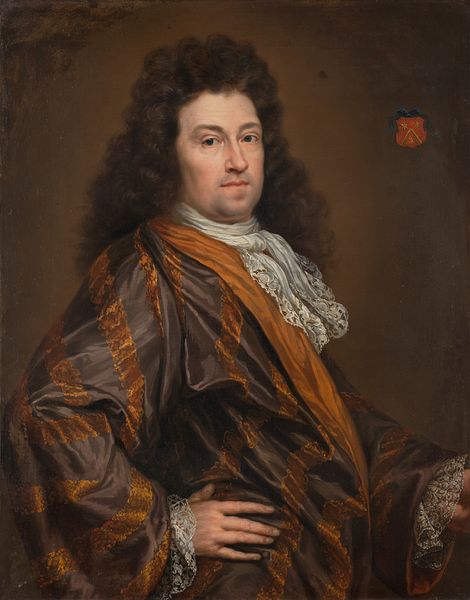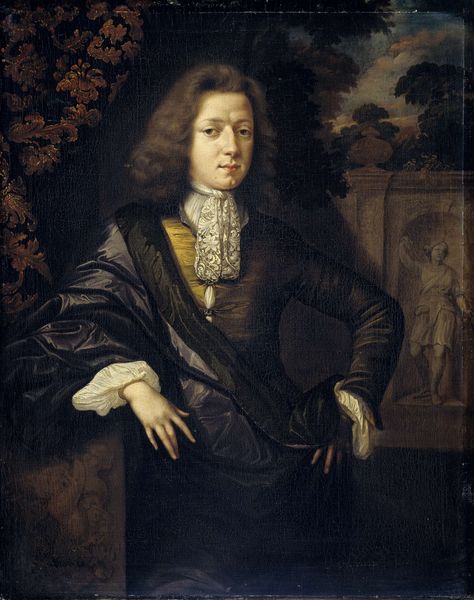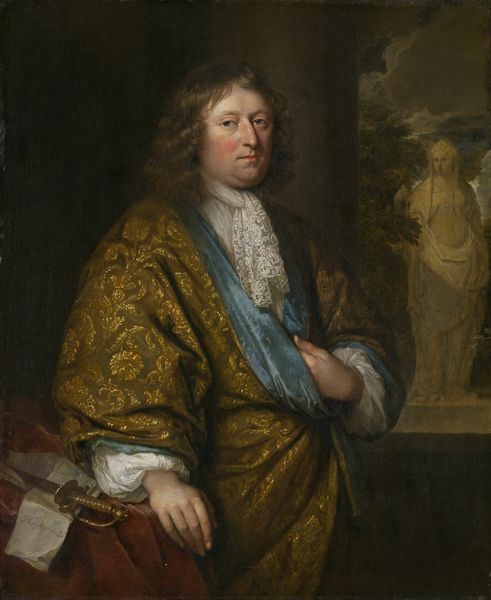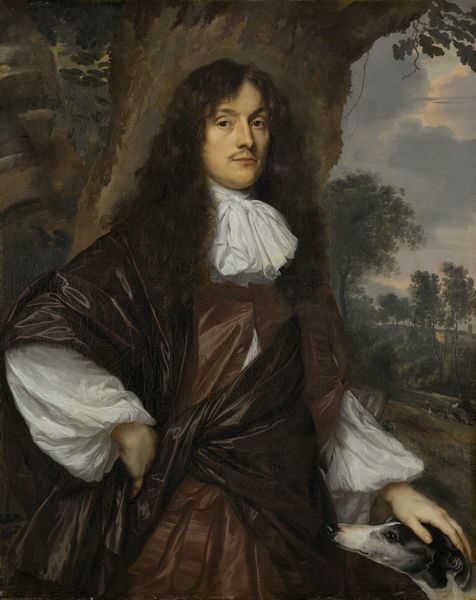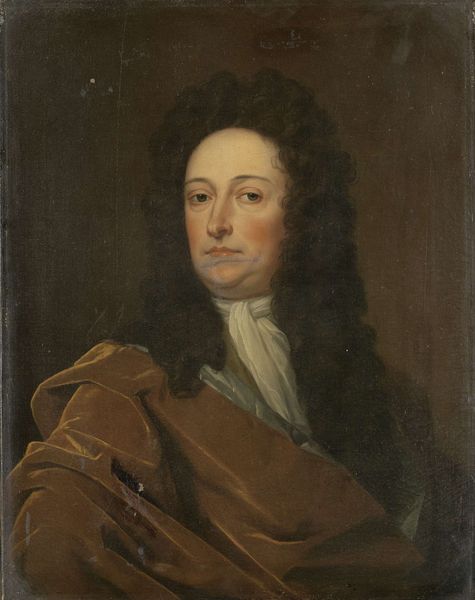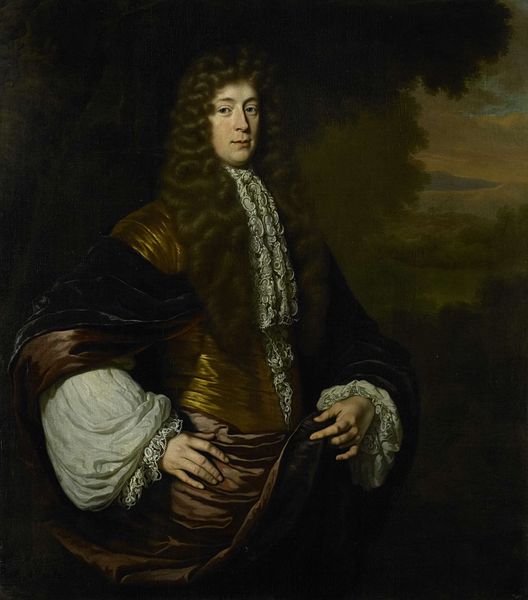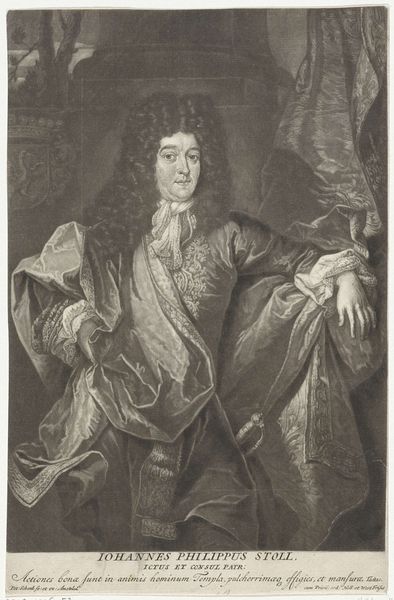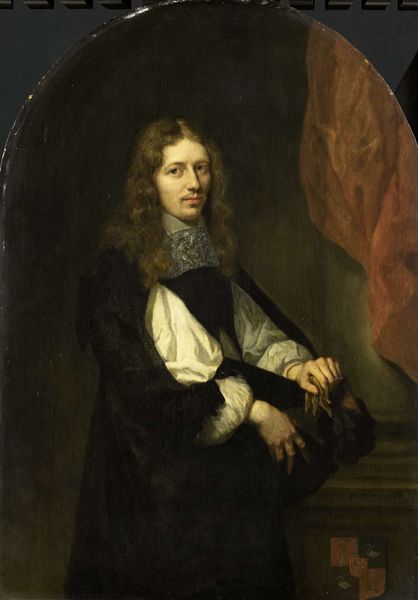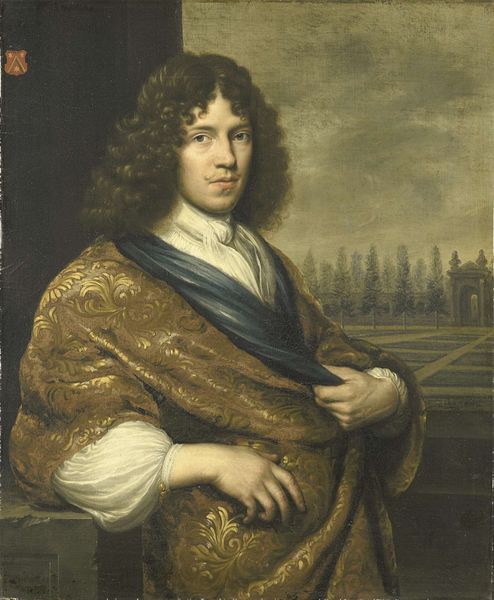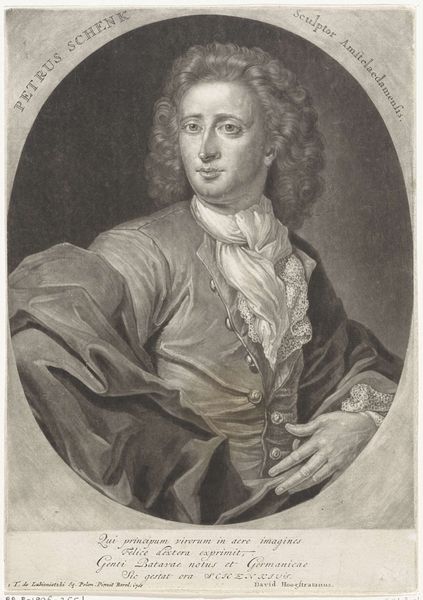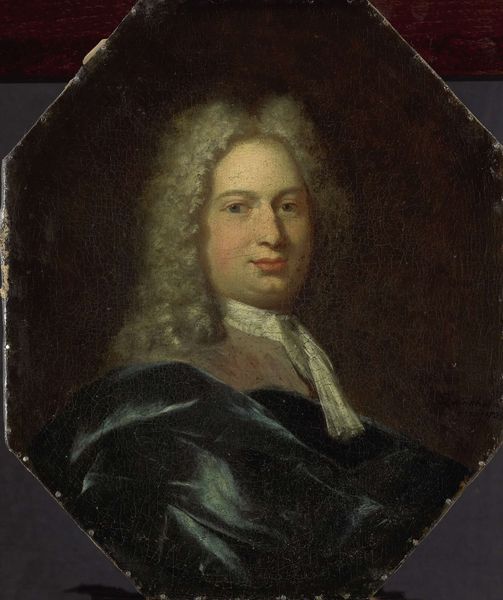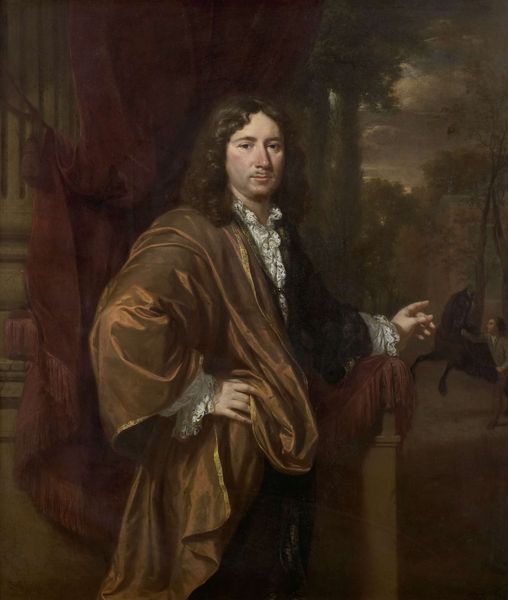
Portrait of Caspar Commelin, bookseller, newspaper publisher and author of the official history of Amsterdam 'Beschrijvinghe van Amsterdam'of 1693 1693 - 1704
0:00
0:00
painting, oil-paint
#
portrait
#
baroque
#
painting
#
oil-paint
#
history-painting
#
academic-art
#
realism
Dimensions: height 57.5 cm, width 48.5 cm, depth 7 cm
Copyright: Rijks Museum: Open Domain
Curator: This is David van der Plas' portrait of Caspar Commelin, dating roughly from 1693 to 1704. Commelin was a prominent bookseller, publisher, and historian in Amsterdam. Editor: My first impression is the incredible sense of weight—the heaviness of the drapery, the serious tone in his gaze, and that weighty tome he’s presenting to the viewer. It seems like it seeks to imbue its subject with profound noteworthiness and consequence. Curator: Indeed. And to unpack that consequence, we must consider Commelin's position within the Dutch Golden Age, particularly his work on the official history of Amsterdam. This portrait operates as a representation of civic identity and intellectual authority. Editor: Yes, look at how Van der Plas uses color to define and give weight to his composition. The darker shades around the borders serve to further highlight Commelin's white shirt and pale skin; his very person shines within the painting's dimensions. Curator: Consider the visual politics at play. The depiction of Commelin holding the book, presumed to be his own "Beschrijvinghe van Amsterdam," suggests not just authorship but authority, contributing to the construction of Amsterdam’s identity and power in a burgeoning colonial context. Note how the figure is constructed in almost exactly the middle, an important man at the center of his world, surely. Editor: There’s something so striking about that, the painting within the painting. And beyond its significance, one sees such detail in its careful brushwork! It begs the question: could its painter truly visualize every block, every curve depicted? Curator: His detailed visual records are invaluable today, particularly as a record of social change within the city during his life, making it especially precious to members of historically excluded groups and their legacies. We can draw parallels, here, between historical methods of recordkeeping and more contemporary approaches to recording and writing community-based narratives. Editor: It’s remarkable to consider the work’s various dimensions of notability. Thank you for expanding its significance with me. Curator: The pleasure was all mine. Hopefully visitors are now better prepared to consider both Commelin's personal significance and what his portrait signifies to the development and changing social awarenesses of Amsterdam.
Comments
No comments
Be the first to comment and join the conversation on the ultimate creative platform.
